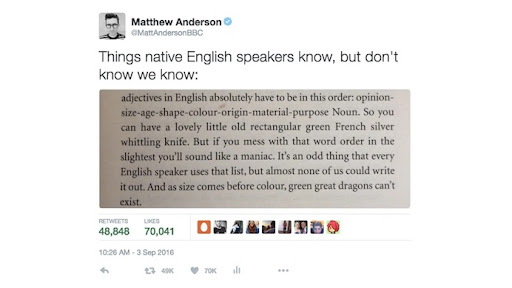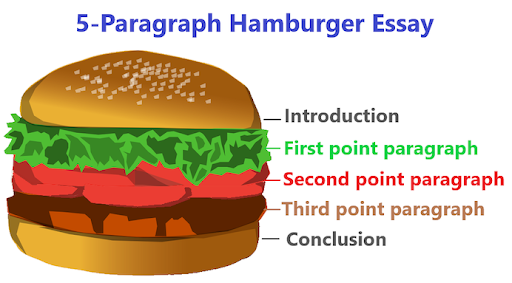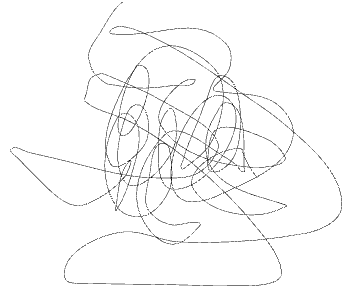From the sad, but true, department: I actually used to say I hated writing. I felt pressure to be perfect/eloquent/funny (there’s a surprise), I felt pressure to hit a deadline, I felt pressure to write effortlessly; generally speaking, I felt pressure to write. And folks who know me know how well I do when someone pressures me to do something.
::eyeroll::
But was there actual pressure from others? Was I expected to be and do all that in all those ways? Or was I putting internal pressure on myself to be perfect? Hmmm…I wonder….
Per usual, when I took a step back from the projects, the suspect was nearly always my competitiveness. I put undue pressure on myself to be perfect, to be memorable, to be finished before my deadline. And I suspect, dear reader, that you do the same when up against a task that includes writing.
Let’s depressurize this package of perfectionism and figure out how to cut ourselves some slack when it comes to writing. I want you to be able to sit down to write without anxiety and, so, to help you with that, I’m going to offer you some tips for organizing and formatting your written content. By organizing yourself before you write, you make the actual task easier. By the end of this post, you should have a bunch of tools at your disposal to try out. Use what you like, leave the rest.
Necessary Evil
Writing is a necessary evil for many of us. Actually, for all of us. We all have to write – whether we’re writing emails, resumes, journals, presentations, proposals, blog posts, whitepapers, ebooks, manuals, invitations, etc. And every single thing we write is for one single purpose: to clearly communicate a message with other people.
Now, some may think that communication is the business of telling other people what we think or feel or expect or know. But that would be incorrect. Communication is the art of taking what is inside our brains and presenting it to another person such that the other person thoroughly understands the message — as if they, too, are inside our head.
Words Matter
The words we choose, the order we put them in, and how we go about structuring our thoughts are all critical to writing clear, concise, and understandable communications. And if you’re writing a cover letter for your resume, for example, great communication can quite literally make or break your success.
I have read some things over the years and I can’t believe I actually have to say this, but…the basic structure of a sentence is: Subject + Verb + Object.
And when I say basic, I mean really REALLY basic. This article is not meant to be an English lesson but, y’all, come on. If you want to be understood you do need to have all those parts in a sentence. You wouldn’t believe some of the stuff that’s come across my desk over the years. Or maybe you would. “I can haz cheezburger”, while adorable, should not actually be a writing goal.
We all know that English is weird in its letter usage (why do bough, tough, thought, and through all have the same letter combination but are pronounced differently?). Additionally, though, native English speakers have word order rules that we instinctively know how to use. We may blow it on punctuation, but we know our word order.
For instance, when using more than one adjective (a descriptive word), we automatically use them in this order:
- Opinion
- Size
- Age
- Shape
- Color
- Origin
- Material
- Type
- Purpose

More Than Words
The basic structure of a document has a beginning, a middle, and an end. When my kids were learning to write, they were taught a hamburger model. Apparently this is still en vogue. The model looks something like this:

It isn’t exactly the model we use when we write in daily life – as grownups we obviously write more than a couple of paragraphs – but if you’re struggling to even get started, this is a good way to start. How would this be useful in business writing? You would use it as a way to create your outline. Oh! Look at that. I introduced a concept without introducing it! Let me take a step back and clarify.
There are a few different ways to organize your writing. I feel like I’ve tried everything over the years. The one that seems most popular is the outline. The hamburger model above works well to illustrate this model. We have all had to create (and turn in for grading) an outline – most likely as a precursor to our junior year term paper in high school. In case you’ve been living in a cave:
- Main Point/Introduction/Thesis
- Intro sentence
- Supporting sentence
- Transition sentence
- Supporting idea 1
- Intro sentence
- Supporting sentence
- Transition sentence
- Supporting idea 2
- Intro sentence
- Supporting sentence
- Transition sentence
- Supporting idea 3
- Intro sentence
- Supporting sentence
- Transition sentence
- Conclusion
- Intro sentence
- Supporting sentence
- Concluding sentence
I have always wanted to be able to create a great outline. I have a couple of teammates here that do this spectacularly. It makes writing the actual document SOOOOO much easier. But I never got with the program for this. My brain simply doesn’t work this way. I run with scissors.
Similar to the outline is the note card method. In this method one simply writes a word, idea, or sentence on separate notecards and physically organizes those. This sometimes worked for me when I was on the move more frequently. I could carry a stack of notecards or sticky notes with me and jot things down when they occurred. Then when I was back in the office I could splay them on the desk or tape them to a wall and organize them, moving things around as needed.
When I’m struggling to put together an idea, the method that I use (about half the time) is a list. I simply start up a document and each new line is a new thought, phrase, or sentence. I can easily move these items around until they make some sense. One idea will feed off another and I find that when I’m done I have enough material to create a post – or maybe more if I’m lucky!
Similar to the list method is my favorite: the mindmap. I’ve linked to the article I wrote about my love of them. I won’t repeat that – go read it. 🙂
Cowboys and Aliens
And then there are those folks who live life on the edge. They write using the ever-popular-usually-dangerous “stream of consciousness” method. Boom! Just like that. Confession time: I do that way more often than I should. Let me just say one thing to you fellow cowboys: time, distance, and editors are your friends.
I have learned the hard way that when I write “off the cuff” I need to set aside my writing for a couple of days and then come back to it. Ninety-nine times out of a hundred I will make massive changes to the document – and if I don’t make the changes, someone else surely will. And they should – have you seen my thought process?
 (my thought process)
(my thought process)
Take Time to Save Face
It’s a rarity when I can simply write and publish/post/send. Actually, even if I could, I wouldn’t. It’s important to put some distance between you and your writing. When I was in journalism school and everything was on paper, we would turn the paper upside down and read it that way. That forces the reader to slow down and read the words on the page (it’s also great to catch spelling errors). But today we’re not turning our screens upside down –- probably.
The next best thing is to set aside at least 2 days for your article to sit untouched. Then read your doc out loud. Slowly. Be attentive and only read the words actually on the page. This will help you do some grammar checks and will also help you discern if your words are actually forming cogent sentences. You’ll notice how many times you use certain words or phrases (I tend to use “ok” and “so” a lot – I go through my writing to try to remove the bulk of those).
Then have someone else read it. This critical step will ensure that you are truly communicating your message. If your “someone” understands what you’ve written, you’re gold. If they don’t, you’ve got some work to do. Remember that it is not a personal attack if they recommend changes (probably), it’s getting clarity. The last thing you want is to send a cover letter or resume with a) poor spelling, b) poor grammar, or c) poor wording.
Please and Thank You
Lastly, mind your manners. In your own way, don’t forget to say please and thank you to your readers. Kindness matters.
That said, I’d like to encourage you to continue this topic over in our platform-agnostic Community where we discuss a wide variety of things from the very technical to best practices to career choices. It’s a free resource for everyone – you don’t even have to join (but I think you’ll want to).
Published on 9/29/22 – https://jumpcloud.com/blog/how-to-write-when-you-hate-to-write
